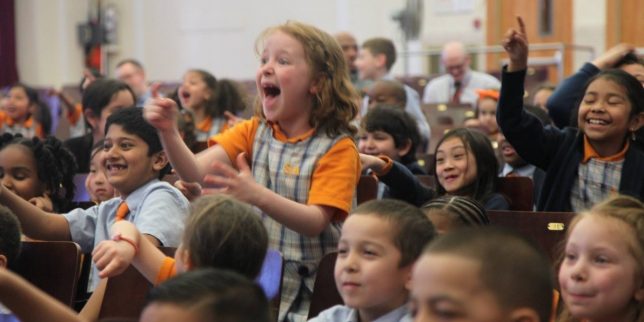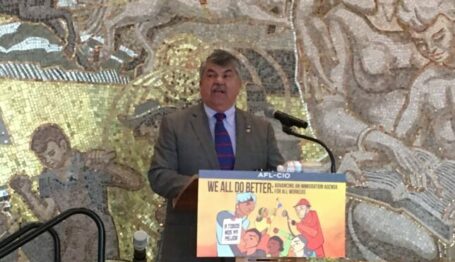Labor Watch
Do Teachers’ Unions Weaken the Immune System?
A new study shows unionized teachers are more than twice as chronically absent as non-unionized teachers.
 From businessinsider.com
From businessinsider.com

Teacher absenteeism in schools has turned into a chronic plague of hypocrisy: schools insist students be present, but can’t seem to get their faculty to do the same.
A recent report by the Thomas B. Fordham Institute’s senior research and policy associate David Griffith shows that teachers have worse work attendance than their peers in other industries and teachers in other countries. The report, entitled, Teacher Absenteeism in Charter and Traditional Public Schools, reveals that school teachers in the United States miss about eight school days a year because of sick and personal leave, while the average U.S. worker takes about three-and-a-half sick days a year. This is in addition to the days off that teachers receive for vacation, holidays, professional development days, and field trips.
Griffith defines “chronic absence” as when a teacher misses more than ten school days for “sick” or “personal” leave. When he compares public school teachers with charter school teachers in this area, the difference is quite glaring. Public school teachers are almost three times as likely to be chronically absent as charter school teachers, 28 percent to 10 percent. This is true in 34 of the 35 states that have a large percentage of charter schools. In eight states and the District of Columbia, public school teachers are at least four times as likely as charter school teachers to be absent.
So, is the air in public schools more contaminated than in charters schools, thus causing all these public school teachers to get sick at a much higher rate than their counterparts?
The study finds the gap is the widest in areas that require public school teachers, but not charter school teachers, to bargain collectively. It also shows that it is not an issue of public schools, but of unionization. Unionized charter school teachers are twice as likely to be chronically absent from work as non-unionized charter school teachers.
National Review’s Frederick Hess aptly remarks, “Anyone who’s spent any time in classrooms knows the sad truth that little gets done when substitute teachers are in the saddle,” and points out that Griffith’s statistics indicate that teacher absenteeism alone cost a fourth of the country’s schools last year to lose fully two weeks of learning.
The report’s results “suggest that the high chronic absenteeism rates we observe for teachers in traditional public schools are at least partly attributable to the generous leave policies enshrined in state laws and local collective bargaining agreements—and that the chronic absenteeism rate in many places could be reduced without exploiting teachers.” One proposal Griffith suggests is states consider teacher absenteeism as a “nonacademic indicator” of a school’s success in the same way that student absenteeism factors in the Every Student Succeeds Act (ESSA). He also suggests that schools could seriously cut down on absenteeism by eliminating the carrying over of sick days from one school year to the next while simultaneously adopting generous maternity leave policies.
In response, union leaders across the board discounted the study’s results.
Robert Walsh, executive director of National Education Association, Rhode Island dismissed Fordham as “a right-wing think tank that attacks unionized public schools.” National Education Association president Lilly Eskelsen-Garcia said, “Fordham is using corrupted assertions to draw misguided conclusions.” Randi Weingarten, president of the American Federation of Teachers even argues that the results show charter schools need better leave policies—so their teachers can experience the same level of absenteeism as union teachers.
Doug Pratt of the Michigan Education Association discounted the study’s results, saying, When you walk into a building in the middle of winter, the flu bug that’s going around and sidelining students and staff can spread like wildfire.” But, Michigan ranks at the top in the number of charter schools; those teachers experience the same frigid climate as the state’s public schools without the corresponding absenteeism rates.
CRC’s Hayden Ludwig recently covered the way New York handles its slacking unionized teachers:
Teachers in limbo are left to finish out each six hour day by napping, reading newspapers, doing crossword puzzles, or conducting menial tasks – stuffing envelopes and making paper copies.
It’s a time-out the New York Department of Education has long denied even exists; yet it costs taxpayers $150 million each year in teachers’ salaries and benefits. …Unsurprisingly…many idlers are repeat offenders.
Public school teachers, like all other tax-payer funded employees should receive just compensation for the job they do. But, they can’t do that job if they don’t show up; Griffith’s study shows that 28 percent of them are playing hooky on a regular basis.



